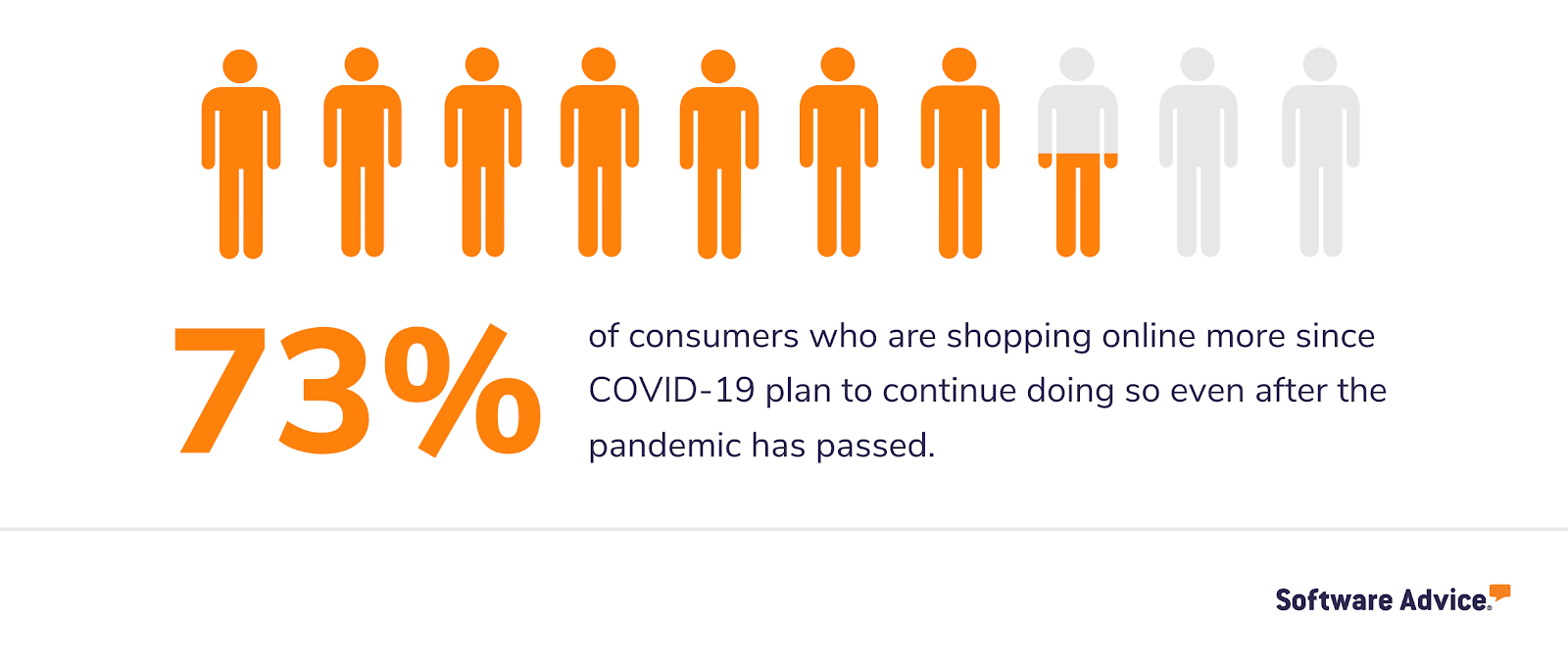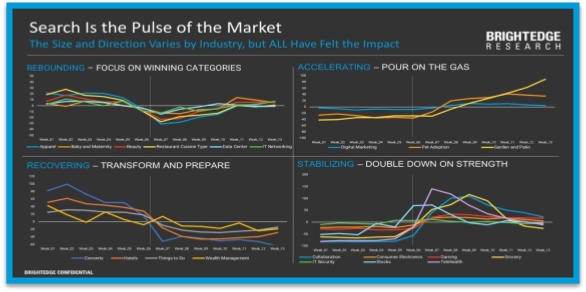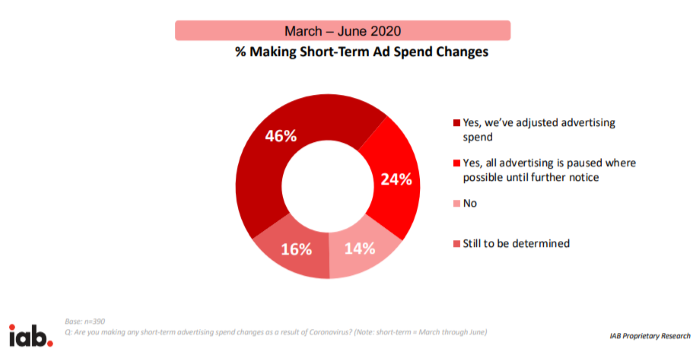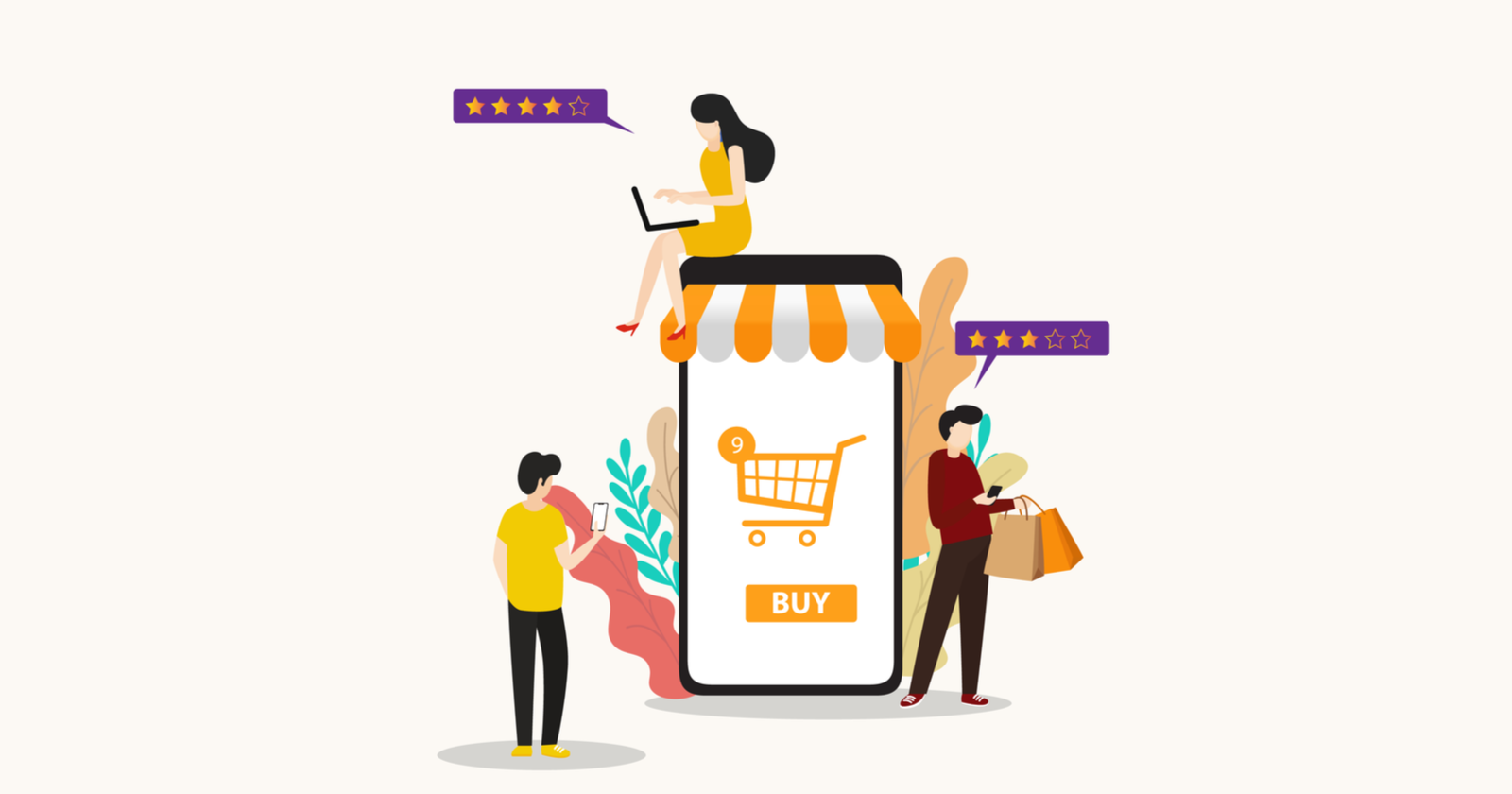The COVID-19 pandemic has created a deep sense of uncertainty across all sectors of society.
This has directly affected marketers, who need to stay on top of the latest trends affecting their customers.
SEO and search have been the only way for marketers to keep pace with the daily disruptions.
We can step back and take another perspective on all of this flux.
The pandemic has accelerated digital transformation trends that were already in motion before lockdown.
Although the extent of the changes will only be understood in time, we can still clearly understand the direction of travel.
That provides us with a firm basis to prepare a strategy and seize the opportunities that will arise now and in the future.
Those that combine this broader insight with true customer understanding will lay the foundations now for a successful holiday season and beyond.
In this article, we will begin by identifying the two defining trends marketers need to know now, before analyzing the changing psychology of online shopping.
We will round off with actionable tips you can use to set up your business for SEO, PPC, and ecommerce success through the rest of this turbulent year.
Two Key Trends All Retail Marketers Should Know
First, the rise of ecommerce.
It is worth sharing some statistics to put into context just how sharp the increase in ecommerce sales has been:
- U.S. ecommerce sales in July rose 55% year-over-year (YoY) reaching a record $66.3 billion according to Adobe Digital Economic Index.
- Ecommerce jumped from 15% of total retail sales in the U.S. in Q1 2020 to over 30% in Q2. That’s over a decade of growth in the space of just a few months as reported by the U.S. Department of Commerce.
- Amazon sales grew to $88.9 billion for Q2 2020, a 40% increase on the same period last year.
With traditional stores closed, it was inevitable that ecommerce would pick up the slack.
However, early data shows that the shift in behavior we have observed recently will usher in a new age of online-first shopping.
- According to Software Advice, 73% of consumers who are shopping online more since the pandemic plan to continue doing so in future.

- Wunderman Thompson Commerce finds that just 16% of consumers believe they will go back to their old shopping habits, with 38% saying that they are more comfortable with shopping online now.
The convenient, contact-free experience of ecommerce is ideal at a time when people are spending time at home and they want to stay safe.

In fact, when we look further into trends we can see that ecommerce related products are in (what I have categorized via BrightEdge research) the rebounding category.
This includes areas such as apparel, baby and maternity, and beauty.
In the accelerating category, there is an exceptional opportunity (including digital marketing) to “pour on the gas” and make the most of SEO opportunity now.
The pandemic has solidified SEO as a critical channel for consumers and marketers.
At such an unpredictable time, search can provide a real-time insight into customer behaviors.
Right now, brands need to understand not just what their audience wants, but also how they are feeling.
This will directly affect how they make their decisions.
Search goes beyond clicks or “likes”, as it hears the true voice of the customer.
SEO is also a cost-effective way of establishing a consistent presence.
When demand is difficult to predict, it is challenging to keep pace through paid media channels.
Automated bidding can help, but budgets are finite.
If there is a sudden surge in activity, brands may miss out if they do not rank for the queries through organic search.
This is particularly pressing right now.
The IAB reports that 70% of advertisers had adjusted or paused their ad spend in June.

SEO is an always-on channel.
Investing the time and resources to build a presence now will pay dividends over the coming months and years.
Of course, we must get a better handle on the new customer journey before we focus on the specific changes we should make to a search marketing strategy.
The New Holiday Shopper
It is clear that consumers will continue to turn to ecommerce and customer care in the near future for more of their purchases.
In fact, Rakuten Advertising revealed that three-quarters of British shoppers plan to do most of their holiday shopping online this year.
With the holiday season just around the corner, retailers will need to revisit their existing plans for the holiday period from Thanksgiving and Black Friday through Christmas.
Many aspects of these plans will remain in place, since brands were already expecting a surge in demand over this period.
Search insights help us understand consumer psychology to prepare for this new demand.
Ecommerce serves other important functions beyond just clinical, one-off purchases.
- It provides instant information on products and services, along with customer reviews.
- It allows people to stay home, rather than visiting stores.
- Consumers can make purchases on the go. In fact, Business Insider Intelligence predicts that mobile ecommerce will take up 54% of total online sales by the end of 2020.
- New technologies like visual search allow consumers to search with images, rather than text.
We can, therefore, see that ecommerce is not purely a transition of pre-existing demand to a website instead of a physical store.
People are now trying new ways of shopping.
Case in point, Think With Google data shows that 3 in 10 U.S. consumers bought from a new brand within the past few months.
This suggests a willingness to try new offerings, if the brand can deliver on the consumer’s current needs.
Price, availability, and high-quality imagery will also retain their importance in the ecommerce shopper journey.
Bearing in mind these complex circumstances, below are tips to help you seize the online shopping opportunity for the rest of this year.
SEO & Ecommerce Tips
1. Revisit Your Local Search Listings
These are an essential resource for shoppers, even if they are not planning to make an in-store purchase.
Keep your stock inventory up to date and highlight product availability.
Deloitte revealed that 59% of U.K. consumers have used more local businesses recently, so it is also worth checking that all addresses and phone numbers are accurate – especially if some staff are working from home.
2. Search Trend Analysis
Keep a close eye on the most popular search queries in your category.
This is a fantastic way to put SEO at the center of the company’s customer strategy.
The real-time insights you take from search can influence ecommerce product plans and marketing messaging across all channels.
3. Develop New Content
Customer demand is changing and updating your meta descriptions will not be enough to satisfy this new market.
Build out new pages that help support customer decisions and reassure them that your business understands their situation.
SEO is the best channel for attracting traffic to these pages, without needing to spend a huge amount.
You can read more in 100 types of content you can produce.
4. Website Analytics
SEO remains the biggest driver of traffic for a large number of businesses today.
Look at how SEO visitors use the website to derive new knowledge about their behavioral changes.
The internal search on your site is a great resource, too.
If customers are searching for particular products, it suggests they can’t find them quickly enough within the main navigation.
5. Consider Search Beyond Google
Vertical search engines, which focus on a specific category like travel or fashion, are still valuable.
They have the benefit of clear customer intent and often, slightly lower competition for search marketing space.
It is also worth identifying video search engines and potentially, creating specific content to highlight your product benefits.
Tips for SEO & PPC Synergy
6. Prepare a Combined Shopping Strategy
Now that free listings have returned to Google Shopping, SEO and PPC have even more ways to work together.
The listings are fed by the Google Merchant Center, so it is a good idea for the paid and organic search teams to work together on the strategy for holiday shopping this year.
7. Add Visual Content to the Search Plan
You will have noticed that Google is an increasingly visual platform.
To take advantage, marketers need to be a little more creative.
Add images and videos to your ecommerce plan and ensure consistency across both SEO and PPC.
8. Pick Your Battles
The search results pages change significantly across queries, and even for individual users.
Your PPC budget will only go so far, especially during peak season. Use it to target high-value queries where paid listings dominate the results.
For SEO, look for opportunities to rank for queries that will attract a high click-through rate.
Be selective and use each channel to its strengths, compensating for the other when you lack coverage.
9. Use PPC to Test Content
Paid search has always been about testing and learning, and never more so than today.
Try out new variations of brand messaging and imagery to see what works best for the audience, then use these lessons for your SEO assets.
At such an unpredictable time, use any chance you get to gain instant feedback.
10. Extend Your Funnel
People head to search engines for a greater range of reasons than ever before.
For example, they use Google to plan ideas far in advance of making a purchase.
This year, the consideration stage will be pivotal.
Develop a variety of customer use cases and go beyond the usual funnel to capture new demand.
Then, you can decide where to balance SEO and PPC efforts.
11. Blend Google with Amazon
The ecommerce customer journey is highly fragmented, but we cannot deny the gravitational pull of Amazon.
Amazon advertising is increasingly sophisticated and will soon be joined by Walmart’s improved advertising platform.
Plan your ecommerce spend across all retailers and search engines, then adapt quickly as you measure the return on each channel.
12. Make the Most of Ad Extensions
Customers are looking for additional information about products and services.
Use ad extensions, such as callouts and structured snippets, to highlight key features such as contactless delivery.
Google has even tested a “Curbside pickup” badge in Local Inventory Ads, so keep an eye out for new extensions you can use.
The early mover advantage is always significant when a new one arrives.
13. Promote New Content
Utilize SEO data to create new, pandemic-related content.
Use paid search to gain some early traffic and cover critical gaps.
Informational queries tend to cost less per click and are a great way to build trust with your audience.
14. Keep Inventory Levels up to Date
Google’s local ads provide an opportunity to sync your store and ecommerce inventory with search.
Consumers can search and scroll through items that are in stock, so they can make a quick purchase.
In fact, searches for “in stock” increased more than 70% from the week of March 28 to April 4.
There is a competitive advantage in focusing your efforts on the products you know you can sell today.
15. Make the Most of Automation
While manual bidding for PPC is great for control, it is inflexible when faced by volatile demand.
Use automated rules and artificial intelligence-led smart bidding to keep pace with what will surely be an unstable period.
Automation can also help you plug gaps in your SEO and PPC strategy via real-time market insights.
SEO & Other Channels Tips
16. Update Your Security Protocols
Consumers have demonstrated during the pandemic that they are open to trialing new brands.
However, they are also sensitive to any potential threats to their personal data.
As ecommerce traffic rises, hackers will inevitably be attracted to retail websites.
Update your plugins and security details to reassure your customers that they can shop securely with you.
17. Invest in a Progressive Web App (PWA)
The importance of speed is clearer than ever.
A PWA will give users the benefits of both a mobile website and an app, with added speed.
Their adoption by ecommerce brands is relatively new, so you can steal a march by investing in this technology now.
18. Incorporate Your Brand Voice
SEO has historically stood apart from other branded assets, due to the different nature of its core functionality.
In essence, SEO has been all about keywords.
As search engines develop their language understanding, companies can perform well through SEO while also using their brand voice.
This element of consistency is crucial right now, so be sure to include SEO in all brand planning strategy meetings.
19. Use SEO to Promote Social Selling
Social commerce will be a huge trend for the next few years, especially with the advent of livestream shopping.
YouTube videos are present in a growing number of Google searches and this is a great avenue to increase awareness of your livestream shopping.
You can also rank through Google for keywords related to this topic and then drive users toward social media channels.
20. Align SEO With Offline Business Changes
Customers do not see any distinction between the company they interact with in-store and the one they shop with online.
They expect the two to work in tandem.
If the business is offering a new promotion, if stores have closed, or products are out of stock, ensure that this is reflected on your landing pages.
These changes are simple, but costly if neglected.
Conclusion
All marketers are in the same situation at the moment.
The sweeping trends affecting us go far beyond the traditional remit of an ecommerce strategy, and that brings with it a sizable opportunity.
We know that ecommerce will be a vital resource for customers and that they have a shifting set of priorities.
The precise nature of those changes cannot be predicted with certainty, but we can still prepare for likely scenarios.
If you want to stay close to the customer, search is the perfect medium to do so.
Follow the data, prepare now, and you will be in a great position to seize every opportunity in a new era of ecommerce behavior.
More Resources:
- Ecommerce Marketing: The Definitive Guide
- A 10-Point Ecommerce SEO Checklist
- 5 Ecommerce SEO Tips to Improve Organic Performance
Image Credits
All screenshots taken by author, August 2020





